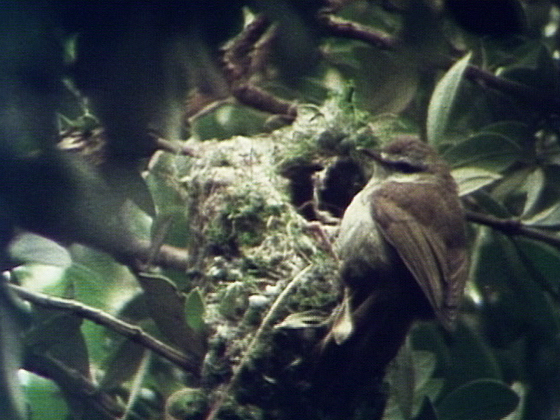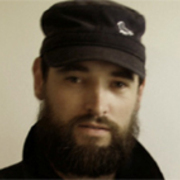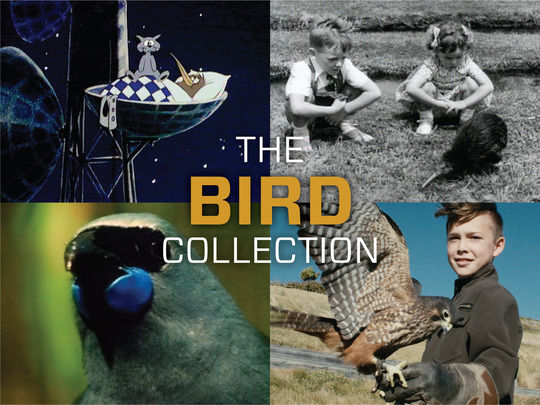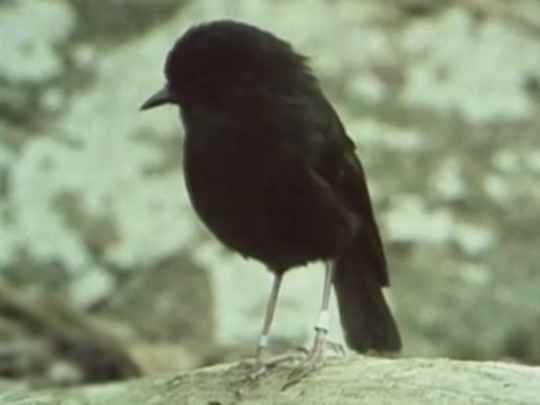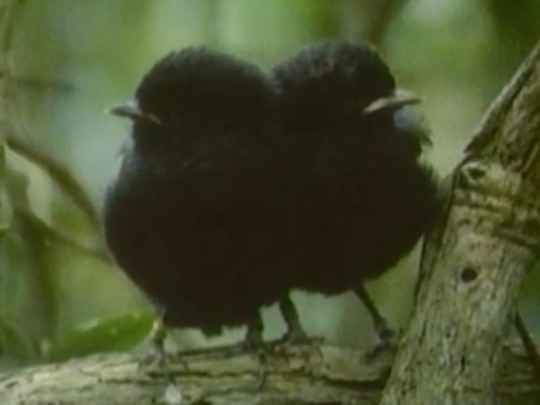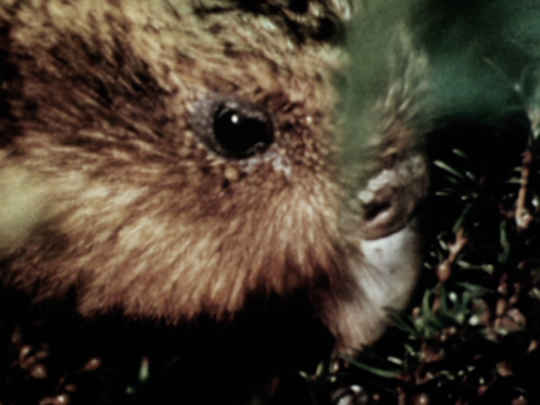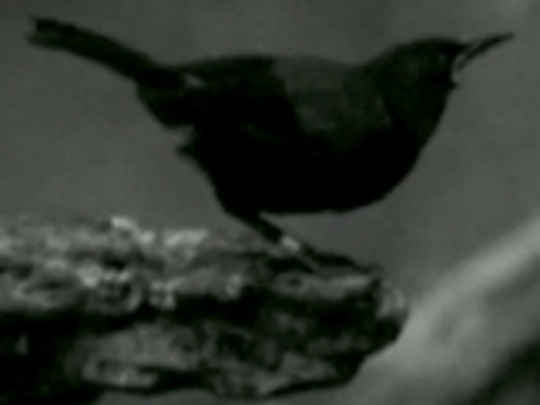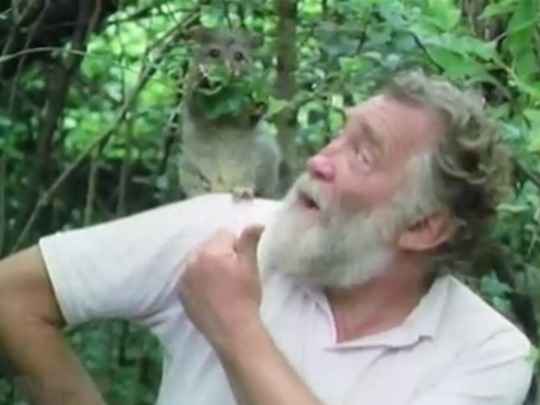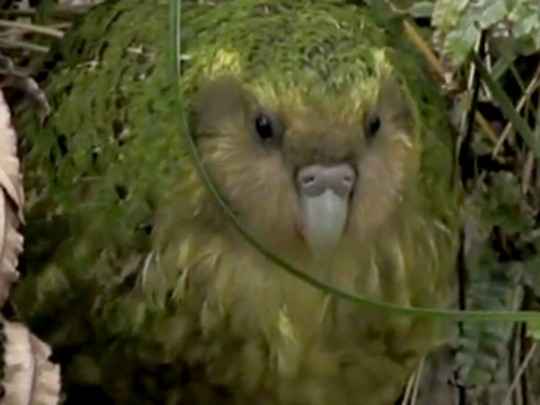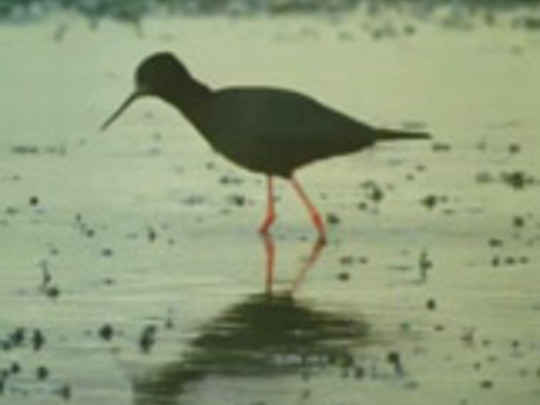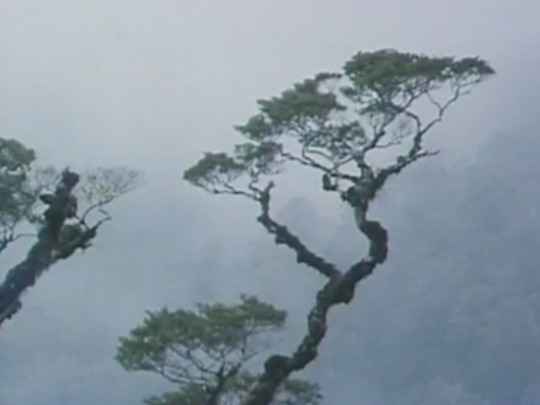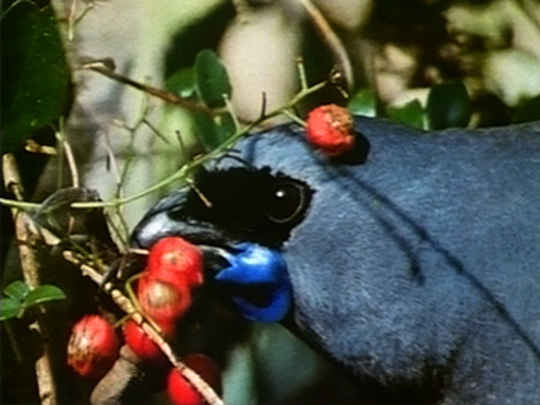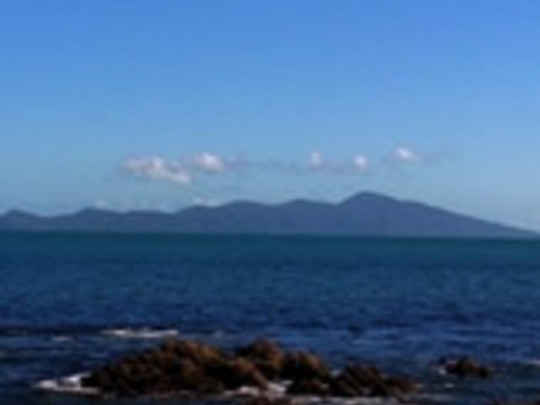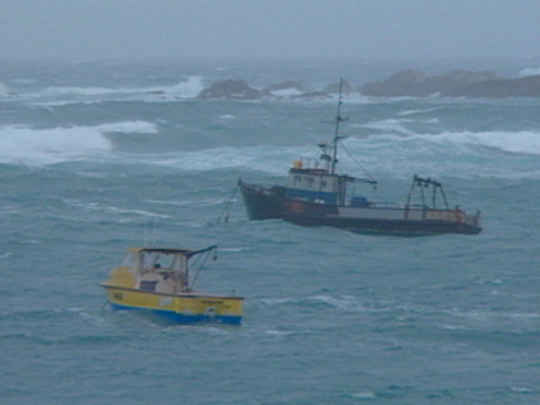The Robin's Return
Television (Full Length Episode) – 1982
Saving the Black Robin
This is an incredible conservation success story filled with adventure and high drama.
The 1982 documentary follows the efforts of a Don Merton-led NZ Wildlife Service team to save the world's (then) rarest bird, the Chatham Island black robin. It was one of three films made by TVNZ's Natural History Unit that chronicled the remarkable 'from the brink of extinction' rescue — Seven Black Robins, The Robin's Return and The Black Robin - A Chatham Island Story.
By 1976 there were only seven birds left, and only two females. In a bid to save the species, the surviving birds were taken from one island to another more hospitable island in a desperate rescue mission.
Through habitat destruction and predation, the once widespread black robin had become restricted to a bleak patch of stunted forest on top of Little Mangere Island. Unless Merton's crew could transfer the last birds from their home, where bush was being strangled by vines and tree roots eroded by muttonbird nest holes, the black robin, it seemed, was doomed.
Seven Black Robins, the first documentary, follows the 1976 -77 rescue mission to capture, transfer and release the robins on nearby Mangere Island, where 120,000 trees had been planted to provide better shelter.
The documentary backgrounds the plight, and picks up the story with the patient capture of the robins using mist nets, bird calls and tasty lures. Too much stress could kill the robin, so the transfer operation is difficult and tentative. The unique design of the transporters is discussed, and the perilous transfer of birds is conveyed without drumming home the danger. The birds are abseiled one-by-one down steep, windswept 600 foot cliffs to handover to an inflatable which has to cross swelling seas to make the delivery to Mangere; the drama is self-evident. The documentary was the third slot in the first Wild South series, which screened on New Zealand television in 1981.
Although the black robin's survival was far from secure, this island transfer was a vital first step in the story of the robin's rescue. The group of seven robins features the famous matriarch of the species, 'Old Blue' (1970 - 1983). Here she's just 'Blue' (a six-year-old when this documentary was first shot). Blue would become the 'Eve' of the species: the ancestor of every black robin living today.
Blue's future involved innovative cross-species foster parenting, which had never been tried before in the wild with small birds. Black robin eggs were removed from Blue's nest (and the nest of the only other female, Old Green – the subject of this documentary) and placed in foster homes with grey warblers and (later) tomtits. The object was to boost their sex drive, and spur the birds to breed more often. Once again, the stakes of Merton's field experiments could scarcely be higher.
As well as excerpts from the first two documentaries, a third doco (The Black Robin - A Chatham Island Story), covered the evacuation of robins to a new home on South East Island, as the population grew beyond the capacity of the scant forest on Mangere. A Chatham Island Story screened in a 7pm primetime slot on Christmas Day of 1987. It was modified in 1989 (to the version seen on NZ On Screen), with Peter Hayden replacing Donald Hope Evans as narrator and Graeme Perkins replacing Trevor Coleman as composer.
Together the black robin films captured the attention of international wildlife filmmakers, and were foundational films for the Natural History Unit (later to become independent production house NHNZ).
NHNZ is now a world leading production company, delivering factual television (mainly focused on the natural world) to networks that include National Geographic, Discovery Channel and Animal Planet. Along with its Dunedin base NHNZ has offices in Beijing and Washington DC. Its many awards include Emmys and the prestigious Wildscreen Panda.
Seven Black Robins producer Michael Stedman would go on to become longtime managing director of NHNZ, and broker its sale to Fox in 1997. He invited writer and presenter Peter Hayden to Dunedin to work on the black robin story. Hayden would become an NHNZ stalwart, alongside being a well known actor (Footrot Flats, Illustrious Energy). Researcher Rod Morris would become another NHNZ (and black robin film crew) veteran, and is a noted bird photographer and naturalist. Editor Melanie Rodriga (née Read) would later direct movies Trial Run and Send a Gorilla.
As Hayden says, "this was a time when New Zealanders knew little about the natural history of their country. The animals I knew were enclosed in fences. A wellspring of curiosity was there to be tapped."
And tap it they did. Wild South helped invigorate a whole generation of New Zealanders with a passion for our birds and bush. Robin's Return was part of the second season of Wild South that won a Feltex Award for Best Documentary in 1983; the 1987 update won in the same category at the 1988 NZ Listener Film and TV Awards.
Merton argued that thanks to "media coverage, and in particular TVNZ Natural History Unit's three Wild South documentaries", the project to save the black robin generated "unprecedented public interest both within New Zealand and beyond. This seems to have been a key factor in bringing about the massive upsurge in public and political awareness and support for biological conservation apparent within New Zealand during the last decade" [the 1980s].
The gentle pace, sparse but efficient narration, and unobtrusive observational footage of a wee inbred black bird might seem quaint in a world where 'Tiger vs. Shark' and deadliest snakes dominate wildlife programming. But one feels genuine admiration for these terse, focused men. They tackle impressive physical challenges, not for immunity or a purse, but out of a passion to help out a special taonga.
When — unsure of whether the precious cargo has survived the rigours of the transfer — the wildlife ranger opens the transport box and a quick black spot flits out and warbles from high in a tree, you feel the same sense of triumph that the ranger does. As Peter Hayden says: "the birds became characters. I think that was our first breakthrough story, using the footage to tell some good science, but also to take you into the personalities of the animals involved."
New generations of New Zealand viewers may demand different forms of storytelling and new means of being engaged, but it is a real tragedy for our unique ngā manu that the significant popular appeal of the Wild South series has not been recognised or replicated, in the 20+ years since.
More information on the Wild South black robin documentaries is available in 1988 book Wild South: Saving New Zealand’s Endangered Birds, by Rod Morris and Hal Smith (TVNZ and Century Hutchinson)
- Paul Stanley Ward spent a decade at NZ On Screen, and was its founding editor. Aside from his work as an award-winning screenwriter and producer, he founded Capital Kiwi, whose mission is to return kiwi to the wilds of Wellington.
